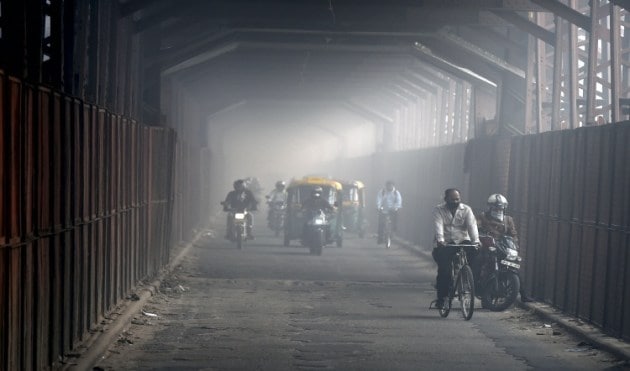Day after Diwali: New Delhi shrouded in toxic smog
Levels of pollutants rose sharply from Thursday night onwards, data from the Delhi Pollution Control Committee (DPCC) indicates.
Updated: November 5, 2021 14:32 IST 1 / 6
1 / 6Delhi’s air turned severely polluted the morning after Diwali, with the city having witnessed bursting of firecrackers despite the ban. Levels of pollutants rose sharply from Thursday night onwards, data from the Delhi Pollution Control Committee (DPCC) indicates. (PTI)
 2 / 6
2 / 6At the Jawaharlal Nehru Stadium station for instance, PM2.5 levels increased from 389 µg/m3 at 8 pm Thursday to a high of 1,553 µg/m3 at 1 am on Friday. This is nearly 26 times the standard of 60 µg/m3 for PM2.5. It stood at around 1,164 µg/m3 at 6 am on Friday. (PTI)
 3 / 6
3 / 6PM10 levels at the station also shot through the roof early on Friday morning. At the Jawaharlal Nehru Stadium monitoring stations, PM10 levels hit 1,643 µg/m3 at 1 am on Friday, up from 519 µg/m3 at 8 pm. The standard for PM10 levels is 100 µg/m3. (PTI)
 4 / 6
4 / 6The neighbouring cities of Faridabad (424), Ghaziabad (442), Gurgaon (423) and Noida (431) also recorded “severe” air quality with cracker bursting peaking after 9 pm. (PTI)
 5 / 6
5 / 6Sulphur dioxide emissions recorded at the station also peaked around 1 am on Friday at 35.5 µg/m3, while the level of nitrogen oxides hit a high of 142.8 µg/m3 at 1 am, up from around 24.7 µg/m3 at 7 pm Thursday. In this image, people cross a railway track amid hazy weather conditions at Shivaji Bridge railway station. (PTI)
 6 / 6
6 / 6Birds perch on street light poles amid low visibility due to a thick layer of smog, a day after Diwali celebrations in New Delhi. (PTI)











